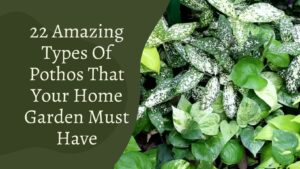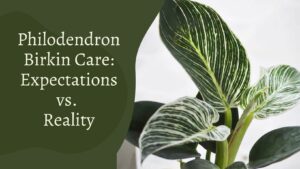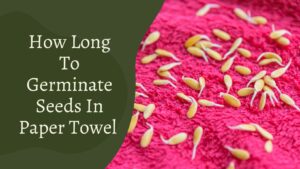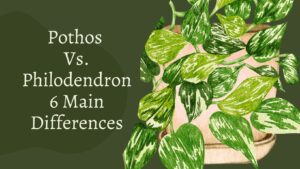
Epipremnum pinetums are also known as Dragon Tail Plant, Centipede Tongavine, Pothos, and Devils Ivy, all of which are popular names for plants in the Epipremnum genus. This is a lovely foliage houseplant, planted for the leaves over the flowers, which seldom occur in culture.
Young leaves are generally whole but change form and acquire distinctive splits as they age. Place this plant in sunny partial shade with a well-draining, airy soil mix for best results and spray it often. Combine it with other houseplants or lay it on a pebble tray to boost the humidity.
Moderate watering is required for dragon tail plant care. They require water once a week. It requires 4-6 hours of direct, strong sunshine. Dragon tail grows best in acidic soil with a pH of 5.1-5.5. It should be kept at 18°C to 25°C around it. It prefers a humidity level of more than 50%.
Requirements for Watering
This elegant plant does not necessitate a lot of water. Summer irrigation is mild, while winter watering is little. Water it once a week during the summer when the dirt is absolutely dry. Insert your index finger into the dirt to verify it. Water your plant if the top 2 inches are dry; wait a few days. This way, you’ll keep your plant safe from root rot and fungal illnesses caused by overwatering. In the winter, a fortnightly watering well is enough.
Requirements of the Soil
The dragon tail plant prefers somewhat acidic soil (pH 6.1-6.5) rather than extremely acidic (pH 5.1-5.5). This plant will thrive in well-drained, organic soil with enough aeration. If you put your dragon tail plant in a container, make sure it has multiple drainage holes on the bottom.
In its container, you may use standard garden soil. There are several space patches in garden soil. It will provide the plant’s roots with adequate aeration. You may improve the drainage by adding peat moss, perlite, and vermiculite.
Sunlight
Proper light exposure is one of the most crucial aspects of dragon tail plant maintenance. It loves strong indirect light because it is endemic to the Solomon Islands’ woods. It requires four to six hours of sunshine for optimal development.
This dragon tail plant may be grown inside by planting it near a window—the ideal window to use faces east. Your plant requests more sunshine if its marks are fading and its foliage has turned completely green. A minimum of one meter should be between the plant and the window to protect it from direct sunlight.
Requirements for Temperature
The dragon tail plant prefers warmer climates. It grows best in temperatures ranging from 18 to 25 degrees Celsius. Extremes of temperature are undesirable. If you keep this plant indoors, you won’t have to worry about its temperature requirements.
Outside, on the other hand, the temperature varies greatly. If you want to cultivate this plant outside, you must give it extra attention. If the days get colder or hotter than they need to be, make the appropriate adjustments to protect your plant.
Humidity
This Tibesti plant thrives in a humid environment. A 50-60% humidity will be ideal for its optimum development. The humidity in the air will keep the leaves green and vibrant. The leaves crisp and brown edges signal that the plant isn’t getting enough water.
In this situation, you’ll need to raise the humidity level in the area around it. You can do it in a variety of ways. It will automatically enhance the humidity if you group it with other plants.
Placing a pebble tray under the plant may also provide additional moisture. It is a little pricey but will permanently fix any humidity issues.
Fertilizer
It is not necessary to fertilize the dragon tail plant on a regular basis. During the growth season, fertilize should be applied to the soil every two weeks.
The ideal fertilize for this Monster-like Dragon Tail plant is liquid fertili, station similar as prayer plant. This plant does not require any fertilize throughout the winter months when it falls dormant.
Dragon tail plant propagation:
If you know the basics, propagating the Dragon Tail plant is a breeze. Here’s a step-by-step tutorial to assist you:
- Take a small container with drainage holes and fill it with water.
- Put some coconut coir in the bottom of the container.
- On top of the coconut coir, sprinkle a mixture of plum soil and pollen.
- On top of the dirt, sprinkle some more coconut skin.
- Your growth medium is now complete. Because your plant has aerial roots, it will benefit from a light-growth medium.
- Take a healthy branch from the dragon tail plant after that.
- Place this branch in the growth medium’s middle.
- More dirt should be added. To keep the soil solid, press it down. Don’t put too much strain on yourself.
- Water the plant and set it in a well-lighted area.
- After a fortnight or two, new growth will begin.
Variegated Dragon tail plant
Philodendron Stenolobum was the name given to this Brazilian plant in the past, and it is still used now. It has long scalloped leaves that may grow up to 3 feet long and is quite stunning! This is a rare find, especially the ones with thin leaves like this one.
It’s classified as a self-header rather than a climber, which means it prefers to stay on the ground and grow into a large, magnificent butterball. These colossal plants were left at a nursery and are now bursting out of their tiny containers. This large plant should be in a 10″ pot, not the 4″ pots it is now in.
Dragon tail pothos:
Dragon-tail and Blue pothos are other names for Cebu Blue Pothos. However, there are some ambiguities in this instance because different species such as satin pothos, treubii pothos, and others exist.
Dragon tail plant indoor:
Dragon trees are popular as large potted plants for homes and businesses because of their endurance for various temperatures.
During the growth season, they should be placed in well-draining soil and watered frequently. They may flourish in a range of light settings, although indirect strong light is preferable.
Light
The optimal light for dragon trees is in direct sunlight, although they may also thrive in moderate shade. Keep in mind that plants grown in reduced light environments will develop slower and produce smaller leaves with less color intensity. Also, avoid placing your dragon tree in full sunlight because its leaves might quickly burn.
Soil
Use a loose, well-drained potting mix for growing dragon tree as a potted plant—loamy soil supplemented with peat moss is best. Make sure the container you purchase is large enough to accommodate the plant’s enormous root system.
Some types are sent from Hawaii with lava rock; if this is the case, remove roughly a third of the rock and replace it with potting soil.
Water
It’s simple to overwater the dragon tree, as it is with many drought-tolerant plants. Wait until the top half of the soil is dry before watering to avoid drowning it (this can often take three weeks or more).
If the plant’s leaves grow brown tips, it’s likely because it’s getting too much water or because the water you’re using has too much salt or fluoride, both of which can produce discoloration.
Water your dragon tree with distilled water or non-fluoridated water to prevent fluoride. When a plant’s leaves turn yellow, it’s typically a sign that it needs more water.
Fertilizer
It is not required for the growth of dragon trees, and it isn’t even required for a healthy plant. However, you may feed them sparingly with a balanced controlled-release liquid fertilizer at the start of spring to help them develop faster. In the winter, don’t fertilizer.
Dragon tail plant growth:
In USDA Plant Hardiness Zones 4A through 8B, Asplenium Ebenoides ‘Dragons Tail’ is a moderately growing perennial plant. Depending on the temperature and other environmental conditions, it develops to a height of 1 foot to 2 feet and a width of 1 foot to 2 feet.
The leaves have a medium green hue. It attracts butterflies and is deer and disease resistant. This lovely vine grows to a maximum height of one meter. Its branches may grow up to 3 feet long if grown in a hanging basket.
You may also support its upright stems with a pole in its container. It will grow straighter with the aid of a supporting pole and appear longer than normal.
Dragon tail plant hanging:
Epipremnum will grow nicely in a hanging basket with long trailing stems, but you will need to provide some support for it to grow up and connect if you want to view its much bigger, mature leaves.
Epiphytic plants, such as Epipremnum, cling to the trunks and branches of bigger rainforest trees in their native habitat and use aerial roots to get nutrients and moisture. Most of these plants will continue in their juvenile state if kept in the house without assistance, with smaller and occasionally simpler shaped leaves.
If you provide an appropriate support, such as a totem pole, as well as the other essential cultural circumstances, your plant will not only grow faster, but will also stay healthy and mature.
Dragon tail plant yellow leaves:
It happen due to overwatering and low amount of sunlight. A mixture of the two is conceivable in some instances. Allow the soil to dry before watering again if the problem is due to overwatering. While checking for root rot is a good practice, yellow leaves might result from a single incident of overwatering.
In most situations, when they receive more sunshine and less water, plants will regain their vibrant green color. By relocating your plant to a location that receives strong indirect sunlight for the most of the day, you can restore the appearance of the leaves.
Furthermore, you may need to alter your watering schedule, only watering your plant when the soil is completely dry.
Dragon tail plant soil mix:
The health of your plant depends on the soil foundation you choose, as well as other factors like humidity and light. In plant development, soil serves a number of important roles. The correct soil, for starters, acts as an anchor for your plant, allowing roots to develop and establish a solid foundation. Of course, earth provides plants with the nutrients, oxygen, and water they require to thrive.
The optimal soil for dragon trees is loose, well-draining, and nutrient-rich. They like a pH of 6–7, which is somewhat acidic. The optimal soil mix for Dracaena marginata is one that closely resembles the plant’s natural habitat, Madagascar’s volcanic soil. Add nutrients from loam, acidity from peat or coco coir, and drainage from vermiculite or perlite.
Dragon tail plant flower:
The blooms of the dragon tail plant are spathe and spadix. It has green inflorescences that bloom exclusively in the summer. This attractive houseplant is an evergreen vine with foliage somewhat unaffected by the changing seasons.
Throughout the year, its foliage remains green and fresh. When they’re mature enough, you’ll discover brown leaves one or two at a time.
Dragon tail plant benefits:
The leaves, particularly the young shoots, are given to cattle in Bali and used to induce parasitic intestinal worm evacuation in horses. The aerial roots’ outer covering is used to blacken teeth, while the roots’ interior sections are used to construct baskets.
In Malaysia and Singapore, it was once considered a cancer cure. Its leaf extracts have demonstrated some anti-tumour action. Therefore, this has some scientific validity.
Conclusion
The beautiful Dragon Tail plant is a low-maintenance houseplant serving as a natural air filter. This means that its beautiful green leaves will add beauty to your home while keeping it fresh and clean.
This perennial, evergreen vine may be seen in hanging baskets, patios, living rooms, and home gardens. This Philodendron look-alike will add a splash of freshness and a touch of nature to your home.

Hi This is Maria, We are a team of gardening enthusiasts with a passion for gardening. We have tried to bring you tips and advice enabling you to grow and maintain a healthy and beautiful garden. We Hope You Find it Useful.







